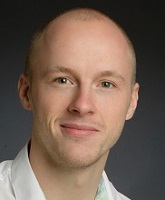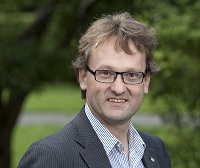

Cryo-EM with RELION
In just a few years, Cryo-EM has gone from being the ugly duckling of structural biology to one of the hottest techniques in science, most recently recognized when the Royal Swedish Academy of Sciences awarded a Nobel Prize to Dubochet, Frank, and Henderson.
Watch the webinar replay where Dari Kimanius, Bjorn Forsberg and Erik Lindahl, the developers of the GPU-accelerated RELION-2 from KTH Stockholm show you how GPUs and algorithms are enabling the science of the Nobel Prize for Chemistry in 2017 - Cryo-Electron Microscopy. This webinar discusses how the field is entirely dependent on computing, how advanced mathematics is used to reconstruct 3D protein structures from extremely noisy 2D images, and how it has become possible to accelerate the performance of these calculations by 5000% using CUDA.
By watching this webinar replay, you'll learn about:
- The ideas behind the REgularized LIkelihood OptimizatoN algorithm, implemented in RELION, and how it is used to simultaneously determine multiple models from cryo-EM data;
- The work necessary to reformulate these algorithms to benefit from CPUs and the general challenges when implementing CUDA parts in large production codes;
- How GPU-specific features such as texture units enabled exceptional performance acceleration; and
- How to use RELION efficiently and get started in your own lab.
ON DEMAND WEBINAR REGISTRATION
Presented By

Dari Kimanius
Computational Method Development, Stockholm University
Dari is working with computational method development and application within the field of structural biology in Erik Lindahl's group. Being deeply involved in the development of RELION and the Swedish computational infrastructure for cryo-EM, he has been subject to a wide range of challenging insights into advanced HPC concepts. His work has greatly contributed in removing the computational bottlenecks involved in the filtering and refinement of experimental data.

Bjorn Forsberg
Researcher, Stockholm University
Bjorn Forsberg is a researcher in Erik Lindahl's group, focusing on the use of electron microscopy to collect and process data from biological specimens, most commonly protein (super)complexes. He is one of the core developers of the RELION code base, focusing on performance computing and acceleration. The close contact with both the RELION codebase and biochemically focused research at the national infrastructure for electron microscopy in Stockholm, has provided him with an extremely diverse perspective on the capacity and best use of RELION, facing a range of challenges and settings.

Erik Lindahl
Professor of Theoretical Chemistry, Stockholm University
Erik Lindahl is Professor of Theoretical Chemistry and Stockholm University, Sweden. His research is focused on understanding structure and function of membranes and membrane proteins (the key workhorse molecules in all our cells), by using molecular simulation in combination with experimental techniques to understand how atomic motions and interactions explain complex biological phenomena. His team develops GROMACS, which is one of the most widely used molecular dynamics simulations codes in the world, and they are also heavily engaged in using GPU technology to accelerate research discovery in fields such as cryo-electron microscopy.
)
Add Presenter 4's Name (John Smith)
Add Presenter 4's Title (ex: CMO, ABC Company)
Add Presenter 4's Bio (2-3 Sentences)
HOSTED BY










